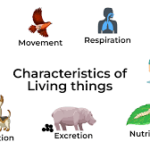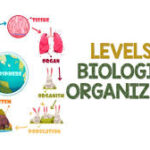9th Biology Chapter 1 Introduction to Biology
9th Biology Chapter 1: Introduction to Biology
9th Biology Chapter 1 Introduction to Biology introduces students to the captivating world of biology, laying the groundwork for their understanding of life and living organisms. This chapter serves as a gateway to the exploration of various biological concepts and principles that will be covered throughout the course. Here, we delve into the key components of this introductory chapter 9th Biology Chapter 1 Introduction to Biology, examining its sections and the fundamental ideas it presents.
What is Biology?
The 9th Biology Chapter 1 Introduction to Biology commences by defining biology as the scientific study of life and living organisms. It emphasizes the breadth of the field, encompassing investigations into the structure, function, behavior, and interactions of living systems. By highlighting the diverse range of topics within biology, students are encouraged to appreciate the complexity and interconnectedness of life on Earth.

Historical Perspectives
Next, the chapter provides a brief overview of the historical development of 9th Biology Chapter 1 Introduction to Biology. It traces the origins of biological inquiry from ancient civilizations to the emergence of modern biology in the 17th and 18th centuries. Students learn about pivotal figures such as Robert Hooke and Anton van Leeuwenhoek, whose pioneering work with microscopes paved the way for groundbreaking discoveries about cells and microorganisms. By understanding the historical context of 9th Biology Chapter 1 Introduction to Biology, students gain insight into the progression of scientific knowledge and the contributions of early scientists.
The Characteristics of Living Organisms
The chapter then explores the defining characteristics of living organisms. It elucidates concepts such as cellular organization, homeostasis, growth and development, reproduction, response to stimuli, and evolution. Through clear explanations and illustrative examples, students gain an understanding of what distinguishes living organisms from non-living matter. They learn how living systems maintain internal balance in 9th Biology Chapter 1 Introduction to Biology, adapt to environmental changes, and perpetuate their existence through reproduction and evolutionary processes.
The Levels of Biological Organization

One of the central themes of the chapter is the hierarchical organization of biological systems. It elucidates the levels of organization, ranging from atoms and molecules to ecosystems. Students explore how atoms combine to form molecules, which in turn constitute cells—the basic units of life. They learn about the organization of cells into tissues, organs, and organ systems, culminating in the complex interactions observed at the ecosystem level. By comprehending the nested nature of 9th Biology Chapter 1 Introduction to Biology organization, students develop a holistic perspective of life’s intricacies.
The Scientific Method
A significant portion of the chapter is dedicated to introducing students to the scientific method—a systematic approach to inquiry employed by biologists. Through a step-by-step explanation of the scientific method, students learn how observations, hypotheses, experiments, and data analysis contribute to scientific understanding. They grasp the importance of empirical evidence, critical thinking, and peer review in scientific inquiry. By familiarizing themselves with the scientific method, students are equipped with essential skills for conducting experiments and evaluating scientific claims.
Branches of Biology
Finally, the chapter concludes by surveying the diverse branches of 9th Biology Chapter 1 Introduction to Biology. Students are introduced to specialized areas of study such as botany, zoology, genetics, ecology, microbiology, and physiology. They learn about the unique focus and research interests of each branch, as well as their contributions to our understanding of the natural world. By exploring the breadth of biological disciplines, students gain insight into the interdisciplinary nature of biology and the interconnectedness of its subfields.
In summary, the first chapter of the 9th Biology Chapter 1 Introduction to Biology textbook serves as a comprehensive introduction to the field of biology. Through its exploration of fundamental concepts, historical perspectives, and scientific methodologies, the chapter lays a solid foundation for students’ journey into the captivating realm of life sciences. It instills in them a sense of curiosity, wonder, and appreciation for the complexity and diversity of life on Earth.
1. Understanding 9th Biology Chapter 1 Introduction to Biology

In this section, students are introduced to the fundamental concept of biology as the scientific study of life and living organisms. They explore the breadth of topics within the field and understand its significance in unraveling the mysteries of the natural world.
2. Exploring Historical Perspectives
This subheading delves into the historical development of biology, tracing its roots from ancient civilizations to the emergence of modern biological sciences. Students learn about key historical figures and their contributions to shaping our understanding of life and living systems.
3. Characteristics of Living Organisms in 9th Biology Chapter 1 Introduction to Biology
Here, students explore the defining characteristics that distinguish living organisms from non-living matter. Concepts such as cellular organization, homeostasis, growth, reproduction, response to stimuli, and evolution are discussed in detail, providing students with a foundational understanding of life processes.
4. Levels of Biological Organization
This section elucidates the hierarchical organization of biological systems, guiding students through the levels of organization from atoms and molecules to ecosystems. By understanding how living systems are structured and interconnected, students gain insight into the complexity of life’s organization.

